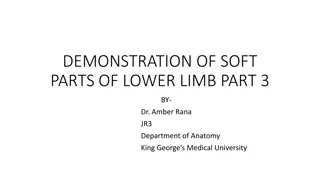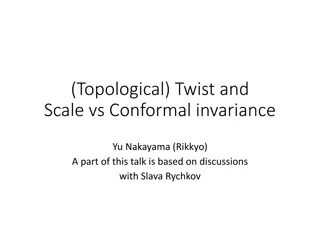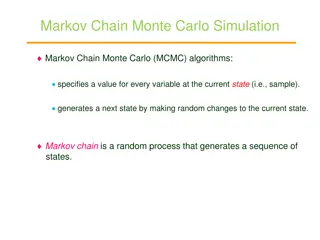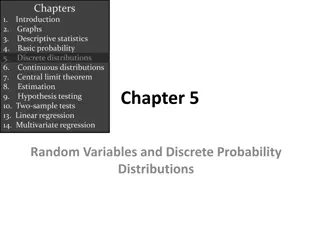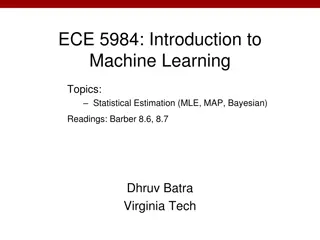Invariance in Posterior Distributions
Exploring the insensitivity of posterior distributions to variations in prior distributions using a Poisson model applied to pancreas data. The analysis involves calculating posterior mean and standard deviation with different Gamma prior distributions. Results showcase minimal change in outcomes across various prior values due to stable ratios in the computation process.
Uploaded on Sep 10, 2024 | 0 Views
Download Presentation

Please find below an Image/Link to download the presentation.
The content on the website is provided AS IS for your information and personal use only. It may not be sold, licensed, or shared on other websites without obtaining consent from the author.If you encounter any issues during the download, it is possible that the publisher has removed the file from their server.
You are allowed to download the files provided on this website for personal or commercial use, subject to the condition that they are used lawfully. All files are the property of their respective owners.
The content on the website is provided AS IS for your information and personal use only. It may not be sold, licensed, or shared on other websites without obtaining consent from the author.
E N D
Presentation Transcript
MAS2317 Question 12 Brandon Gourlay-Herring
Question 12 In viewing a section through the pancreas, doctors see what are called islands . The number of islands seen in 900 patients are summarised below. Number of Islands 0 1 2 3 4 5 6 7 Frequency 327 340 160 53 16 3 1 0 Assuming that the numbers of islands are Poisson distributed with mean , obtain the posterior mean and standard deviation for from several gamma Ga(g,h) prior distributions (with g and h in the range 1-50 choose around 5 values in this range). Why is the posterior distribution quite insensitive to variations in the prior distribution?
The first thing we need to do is get a Posterior distribution for . To do this we use: ????????? ????? ?????? ???. So we need Posterior, we have our Prior, and we need to work out our Likelihood: 900? ???? f ? ? = ?=0 . ??! Now we can put in our values from our data sample to get: 327 1 ? ??0 0! ? ??6 6! f ? ? = f ? ? = ? ? 900? ?904. And so this is our likelihood function, where k is a constant.
Now we come back to ????????? ????? ?????????. We are told that our Prior distribution is a Ga(g,h), so we have our Prior as: ? ? = ??? 1? ? . ? And so we have: ? ? ? ? ? ? ? ? , ? ? ? ?? 1? ??904? 900?, ? ? ? ?904+? 1? 900+ ?. So we see that we have the Posterior distribution: ? ? ? ~ ?? 904 + ? , 900 + .
Now we are asked for the mean and standard deviation from our Posterior distribution with several different values of g and h between 1 and 50. Here is a table showing the means and standard deviations of 5 different g,h combinations: g,h 1,1 50,50 1,50 50,1 25,25 Distribution Ga(905,901) Ga(954,950) Ga(905,950) Ga(954,901) Ga(929,925) Mean (5 d.p.) 1.00444 1.00421 0.95263 1.05882 1.00432 S.D. (5 d.p.) 0.03339 0.03251 0.03167 0.03428 0.03295
As we saw there is very little change in the means and standard deviations, and the question asks us about why this is. The reasoning for this is that between 1 and 50 our choices of g and h will not have much impact on the ratios used in working out this information. For a ?? 904 + ? , 900 + distribution, we have: ? ? =904+? 900+ , 904+? 900+ . ?.?. ? = So for g,h between 1 and 50 there will be very little change in these values.
The End Thank you for listening







